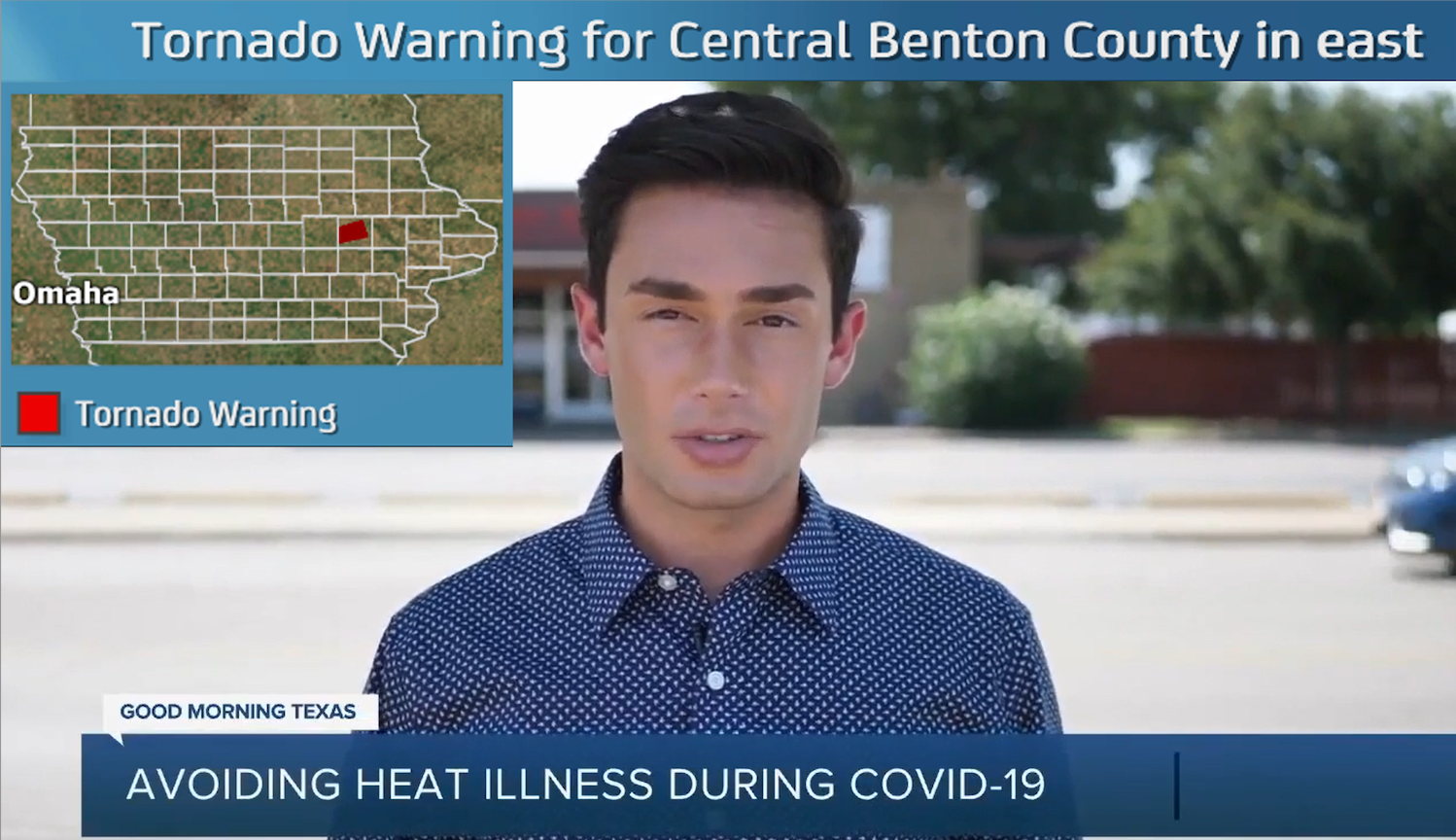
Meteorologists contend with expanding demands of weather alerting

When it came to weather alerts in the not-too-distant past, broadcast meteorologists only had to attend to linear-TV bottom-of-the-screen scrolls. That is not at all the case today.
“Technology has advanced so rapidly in the communications and broadcast sector that now there are so many more platforms that viewers are going to to consume content, and that is where you need to be,” said Brian McDonald, senior media technical sales and consulting manager for The Weather Company, an IBM business.
McDonald’s observation was made during a recent conversation with TVNewsCheck Publisher Kathy Haley. Called “Weather Alerting: Expanding Demands & Evolving Technology,” McDonald added during the talk that the souped-up tech of contemporary times has not only meant an increase in the number of broadcast platforms, but changes in consumer habits and expectations that publishers must cater to.
“As a consumer, we’re used to being alerted multiple times a day,” McDonald said. “When your cellphone vibrates, you’re being alerted that there’s new content there that you need to look at.”
New email alerts pop up on your tablet, laptop or PC; digital calendars remind you of upcoming events you have to hurry out the door to.
Consumers Now Expect Alerts to Find Them
“We are now conditioned for information to find us,” McDonald continued. “Viewers want you to find them no matter where they’re at, no matter what platform where they’re consuming your content.”
So the demand for weather alerting is higher than it’s ever been. Combine this new technological reality with the rise in extreme weather events — when alerting literally saves lives — and you have some very time-pressed meteorologists, to put it mildly.
That’s why The Weather Company developed a new piece of technology to help forecasters deliver alerts not only more efficiently, but more accurately and compellingly as well. Max Engage and Max Social have been part of the Max Weather platform for some time now and allow for weather alerting across mobile, social, web, OTT and more. The new Max Alert Live equips meteorologists with more robust capabilities to alert consumers on linear television automatically on a 24-hour basis with a streamlined workflow.
Saving Time with Automated Alerts
Station alerts produced by Max Alert Live can be automatically triggered by reliable data from the National Weather Service, even without the meteorologist being aware of the change in conditions. This type of real-time notification saves lives while also saving weather forecasters loads of time. For meteorologists who want a little more control over the alert content, Max Alert Live can send a preview of an alert, perhaps for editorial tweaks, prior to launch.
Max Alert Live leverages cloud-based components that offer a host of benefits. Weather forecasters can log into their accounts from any web browser, anywhere and anytime, to monitor the current situation and modify and activate alert messages for broadcast. Security is also heightened when content is stored in the cloud. It’s all securely encrypted.
Cloud Enables Remote Work, Disaster Recovery and Enhanced Security
“God forbid something happens at your station and we have to rebuild a system; we can rebuild it and download your latest content from the cloud and have you up and running in no time at all,” McDonald said. “The importance of cloud can’t be overstated and within another year or two people are going to be wondering what they ever did without cloud, before we put our Max system into the cloud because of all the advantages it’s going to open up.”
And because Max Alert Live is built into the Max Weather platform, it comes with the plentiful, startling graphics Max Weather is known for, making the alerts more dynamic, engaging and aesthetically appealing, with limitless options.
“Movie backgrounds, icons, the same base map looks, all of the really rich textures and graphics and products that meteorologists are using day in and day out on Max Weather have been poured out into Max Alert Live,” McDonald said.
During the webinar, TVNewsCheck polled the industry insiders as they watched. Responding to a question about their weather alert frequency, 75% of the viewers said they were publishing at least 25% more weather alerts today than in past years.
Familiar Interface Makes Change Come Easier
McDonald said that piece of data aligns with customer research The Weather Company has conducted. The reasons for the increase, he said, are climate change and the growing number of platforms that require published alerts, more effectively reaching more consumers.
But meteorologists are understandably reluctant to add responsibilities to their already stout workload. McDonald noted, too, that people in general don’t like change, and that fact could prove to be a presumed barrier for customers thinking about investing in Max Alert Live. However, The Weather Company proactively addressed such concerns.
“What we try to do is eliminate that challenge by integrating our technology into their existing workflow, so they don’t have to do much more than they’re doing today,” McDonald said. “That’s the beauty of Max Alert Live; it doesn’t disrupt their workflow.”
The development of this product didn’t happen by accident. Max Alert Live is another in a long line of technological tools that McDonald said are the manifestation of The Weather Company’s mission in collaborating with newsgroups.
“We want you to be essential to your viewers,” he said, “so that you can help them make decisions and you can ultimately keep them safe.”
Max Alert Live helps teams provide real-time information that lets them know they must put on a jacket or seek out a storm shelter, without adding to meteorologist workloads.
Mission accomplished.


































Comments (0)